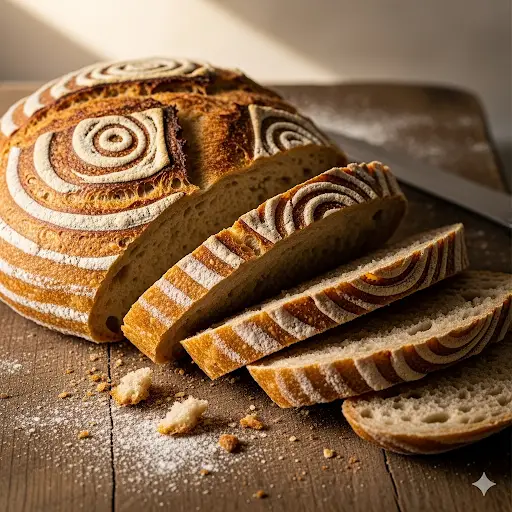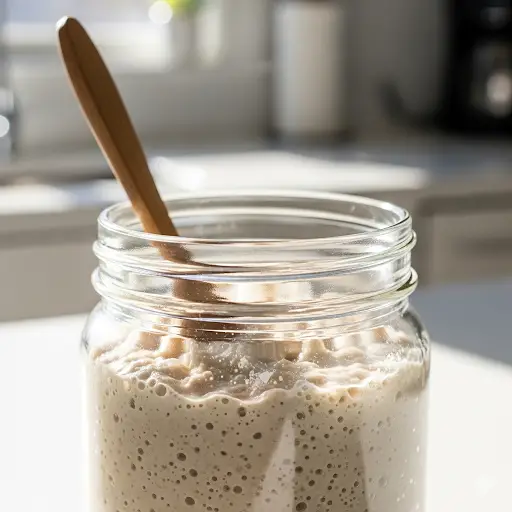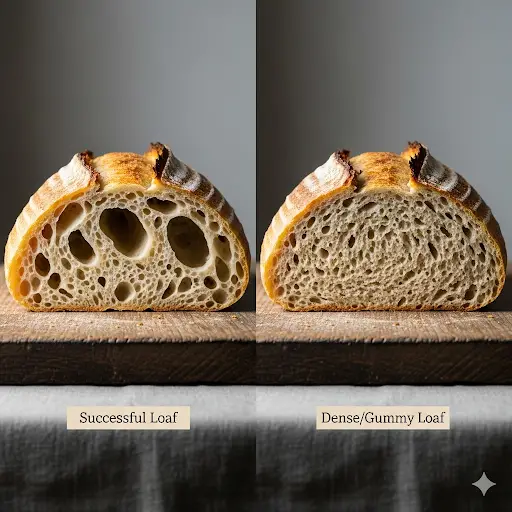How to Make Gluten Free Sourdough Bread: Your Guide to a Crusty, Chewy Loaf!
Alright, fellow bread enthusiast! Have you ever scrolled past a photo of a beautiful sourdough loaf—the deep, crusty exterior, the chewy, open crumb—and felt a pang of longing? And then you remember you’re gluten-free, and that dream just seems… impossible? I’ve been there. For years, I thought a truly delicious, crusty, and chewy gluten-free bread was just a myth. But I’m here to tell you that it’s not! I’ve cracked the code on how to make gluten free sourdough bread, and it’s a game-changer. Get ready to bake a loaf that will make you forget all about traditional bread.
The Gluten-Free Sourdough Myth: Why You Don’t Need to Knead!
Making sourdough is an art, and for a gluten-free baker, it can seem even more daunting. The lack of gluten, which is the protein that gives traditional bread its structure, can make the dough difficult to work with. But that’s where the magic of a gluten free sourdough starter comes in. The starter provides a natural leavening agent that gives your bread a beautiful rise, and the long fermentation process gives it a deep, complex flavor. You don’t need to knead the dough for hours; you just need to let the time and the starter do their work!
The Heart of the Loaf: Making Your Gluten Free Sourdough Starter
The starter is the heart and soul of your sourdough bread baking. It’s a living culture of wild yeast and bacteria that will give your bread its unique rise and tangy flavor. It’s surprisingly easy to make and maintain.
The Ingredients: GF Flours and Water
Making a sourdough starter gluten free is just like making a traditional one, but you’re using gluten-free flours.
- What you need: A high-quality gluten-free flour (I recommend a mix of brown rice flour and sorghum flour), and filtered water.
- Why it works: The yeast and bacteria in the air and on the flours will colonize and ferment, creating a bubbly, active starter.
The Feeding and Maintenance Routine
Once you have your starter, you need to feed it regularly to keep it healthy and active.
- How to make: Mix a half cup of gluten-free flour with a half cup of water in a jar. Cover it with a cloth and let it sit in a warm spot.
- How to feed: Every 12-24 hours, discard half of the starter and add a half cup of fresh flour and a half cup of water. After about a week, your starter should be bubbly and active, and it’s ready to use for your GF sourdough bread!
The Ultimate Gluten Free Sourdough Bread Recipe
Now for the fun part! With your starter ready to go, you’re just a few steps away from a delicious loaf of homemade gluten free bread.
H3: The Ingredients for Your Loaf
- Active Gluten-Free Sourdough Starter: The heart of our bread. You’ll need about a cup.
- Gluten-Free Flour Blend: I recommend a blend of brown rice, tapioca, and sorghum flours for the best texture.
- Water: Filtered water is best.
- Salt: For flavor and to control the fermentation.
H3: The Step-by-Step Guide
- Mix the Dough: In a large bowl, mix your starter, flour, water, and salt. Stir until the dough comes together. It will be sticky and shaggy, not like traditional bread dough.
- Ferment: Cover the bowl and let it ferment in a warm spot for about 8-12 hours. The dough will rise and become bubbly. This is the magic of no-knead GF sourdough.
- Shape: After fermenting, gently shape the dough into a round or oval loaf. You can use a little extra flour to keep it from sticking.
- Final Proof: Place the shaped dough in a floured proofing basket or a bowl lined with a floured cloth. Cover it and let it proof for another 2-4 hours, until it has risen.
- Bake: Preheat your oven to 450°F (230°C) with a Dutch oven inside. Carefully place the dough in the hot Dutch oven, score it, and bake for 25 minutes with the lid on, then another 20 minutes with the lid off.
Troubleshooting Your Bake: From Gummy to Dense Bread
Gluten-free baking can be a bit of a challenge. Here’s how to fix some common problems with your gluten free sourdough bread.
- Dense Bread: Problem: Your dough is not rising. Fix: Your starter might not be active enough. Make sure to feed it regularly and keep it in a warm spot. You can also try adding a little extra water to your dough.
- Gummy Texture: Problem: Your bread is gummy in the center. Fix: You might be using too much water in your dough. You can also try baking it for a little longer or at a slightly lower temperature.
- Crumbling: Problem: Your bread is crumbling when you slice it. Fix: You might need to add a little more binder, like xanthan gum or psyllium husk, to your flour blend.
Best Gluten Free Flours for Sourdough: A Comparative Guide
Choosing the right flour is key for a successful sourdough without gluten.
- Brown Rice Flour: A great base flour that provides structure and a mild flavor.
- Sorghum Flour: Adds a slightly sweet, nutty flavor and a tender crumb.
- Tapioca Starch: Provides elasticity and chewiness, helping to mimic the texture of traditional bread.
- Psyllium Husk: A fantastic binder that helps to create a chewy texture and prevents crumbling.
- Commercial Blends: You can use a commercial gluten-free bread flour blend, but be sure to check the ingredients to see what flours and binders it contains.
FAQs about Gluten Free Sourdough Bread
Can you make a sourdough starter with gluten-free flour?
Yes, you can make a sourdough starter gluten free by using a combination of gluten-free flours (like brown rice, sorghum, or tapioca) and water. The process is the same as for a traditional starter.
What is the best flour to use for gluten-free sourdough starter?
The best flour to use for a gluten free sourdough starter is a mix of brown rice and sorghum flours. This combination provides a good balance of nutrients for the wild yeast and bacteria to thrive.
Why is my gluten-free sourdough bread so dense?
Your gluten free sourdough bread may be dense if your starter is not active enough, or if you did not let the dough ferment and proof for long enough. Make sure to feed your starter regularly and be patient with the fermentation process.
How long does it take to make gluten-free sourdough bread?
Making gluten free sourdough bread is a long process that requires patience. The entire process, from feeding your starter to baking the loaf, can take up to 24 hours or more.
Does gluten-free sourdough have gluten in it?
No, if you make gluten free sourdough bread with certified gluten-free flours and use a gluten-free starter, there should be no gluten in it. It is a safe and delicious option for those with a gluten intolerance.
Is gluten-free sourdough starter easier to maintain?
Gluten free sourdough starter can be a bit more finicky to maintain than a traditional starter, as it doesn’t have the gluten for structure. However, with regular feeding and a warm environment, it can be just as active and reliable.
What is the difference between gluten-free sourdough and regular sourdough?
The main difference is the lack of gluten in gluten free sourdough bread. This means the dough is stickier and more delicate, and it requires a different approach to shaping and baking. However, the final result can be just as delicious, with a beautiful crust and a tangy flavor.
Final Thoughts: Your Perfect Loaf Awaits!
So there you have it, fellow baker! The dream of a delicious, crusty, and chewy loaf of gluten free sourdough bread is now a reality. It’s a journey of patience, a little bit of science, and a whole lot of love. But trust me, the first time you pull a perfectly baked loaf from the oven, you’ll know that all the effort was worth it. Go forth, feed your starter, and get baking! Your perfect loaf is waiting. 😉





